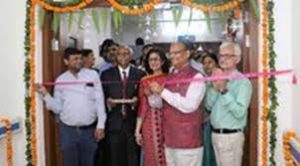North India’s First Skin Bank:

North India’s first skin bank was inaugurated in Delhi’s Safdarjung Hospital.
- The country has 16 skin banks — a facility where the skin of deceased persons can be donated — with seven in Maharashtra, four in Chennai, three in Karnataka, and one each in Madhya Pradesh and Odisha.
- A skin bank is a place where cadaveric skin is processed and preserved under optimal conditions from where it can be used for the benefit of Burn victims.
- Skin can be donated after Death within 6 hours from the time of Death.
- Anyone can Donate Skin irrespective of sex & blood group; the minimum age of the donor should be 18 years.
- There is no upper age limit; even a 100-year-old person can donate his skin, and it will be used for treatment.
- The skin of persons suffering from AIDS, Hepatitis B & C, Sexually Transmitted Diseases, Skin Cancer, Active skin Disease and Septicemia are considered unfit for donation.
- At the time of skin harvesting, a blood sample from the body of the deceased is also taken, and a necessary test for HIV, Viral markers & Hepatitis is carried out at the Skin Bank.
- An old history of trauma or old history of burns does not make the donor unfit for skin donation.
- Skin is generally preserved in 85% glycerol solution. It is stored between 4-5 degree Celsius, and it can be stored for a period of up to 5 years.




